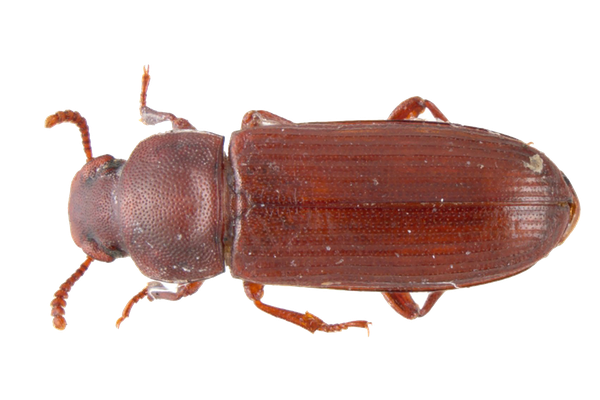| Description | Adults are a 3.5–4 mm long, shiny, flattened oval, dark reddish-brown beetle. The antennae gradually increase in size towards the tip. Viewed from the underside, the gap between the eyes is about 2.5 times the diameter of one eye. This insect does not fly. |
|---|---|
| Distribution | Cosmopolitan. Thought to have originated in India, but now found throughout all tropical, subtropical and warm temperate regions of the world. It is found in all grain-growing states of Australia. |
| Pest status | Major, widespread, regular. |
| Host range | Infests most stored grain feeding on damaged grain. |
| Damage | A heavy infestation discolours grain and emits a foul odour due to a secretion from the abdominal glands of the pest. This pest does not attack grain in standing crops. |
| Life cycle | Average fecundity is 400–500 eggs per female, with peak oviposition occurring during the first week. Adults may live longer than 3 years, and females may lay eggs for more than a year. Eggs are deposited directly in flour, other food material, or attached to the surface of the container. They are white or colorless and covered by a sticky material to which flour can adhere. Eggs hatch in 3–5 days at 32–35°C. Larvae burrow into kernels of grain but may leave their burrows in search of a more favorable food. |
| Means of protection |
Cultural control – This insect does not occur in standing crops. Therefore, good hygiene with storage and handling equipment should minimise infection. Chemical control – Fumigation in sealed storage, protectants and dichlorvos. |
